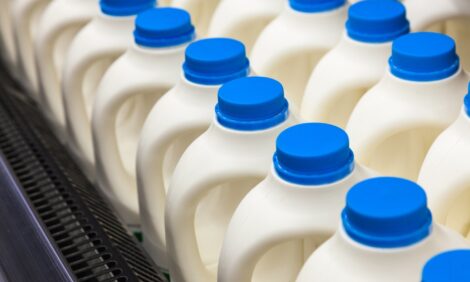



Farmer Confidence Sinks as Australia's Dairy Industry Faces Tough Times
AUSTRALIA - Many Australian dairy farmers have been hard hit by the impacts of a deep and persistent trough in international dairy markets after late cuts to farmgate prices by some processors in the southern, export-focused states.According to Dairy Australia’s latest Situation and Outlook report, an already challenging season, due to dry conditions, has become significantly more difficult as the effects of the price reduction continue to unfold. Farmer confidence has been impacted; with flow on effects for on-farm investment and likely future growth.
“There is little doubt that managing short term pressures to achieve longer term business plans will prove a greater challenge than usual in the months ahead,” Dairy Australia senior analyst John Droppert said.
Confidence amongst farmers measured by the National Dairy Farmer Survey (NDFS), conducted in February and March, showed a decline in the proportion of farmers feeling positive about the future of the industry from 74 per cent to 67 per cent. A recent supplementary survey suggests the number of farmers feeling positive about the industry has now dropped below 50 per cent.
Mr Droppert said national milk production is expected to be down about 2 per cent for the 2015/16 season to between 9.55 and 9.65 billion litres. The outlook for 2016/17 is heavily dependent on seasonal conditions, but a further 2-5 per cent fall in production is anticipated.
On the international front, dairy demand has recovered in most importing regions over the past 12 months, with the overall volume of dairy trade up nearly 6 per cent. China has been responsible for a large proportion of this growth, with total exports to the country up 16 per cent in volume. Exports to Southeast Asian markets have continued to grow, with strong expansion in milk powder categories, while export volumes to the Middle East and Japan have eased slightly.
However, Mr Droppert said supply continued to outpace demand, with inventories in many parts of the world building as production in Europe and the US continues to expand.
“Despite early signs, a global market turnaround remains unlikely until 2017. On a more positive note, demand in the Australian market remains stable and some relief from elevated farm input costs is likely,” he said.
Although there has been some slowing, overall trends for supermarket sales of major dairy categories remain relatively stable. Dairy spreads continue to grow strongly (up 4.2 per cent in volume), while sales in cheese volumes increased by 1.7 per cent for the 12 months to March 2016 and sales volumes for fresh milk are holding steady.
On farm, dry conditions, low allocations for irrigators and constrained pasture growth has coincided with a tight market for hay. Lower international grain prices have taken some time to flow through to the Australian market, while global fertiliser prices have been depressed for some time.
“A more favourable rainfall outlook suggests farmers may be better placed to take advantage of the ongoing global oversupply to grow more feed on farm, where cash flow allows it,” Mr Droppert said.
TheCattleSite News Desk


